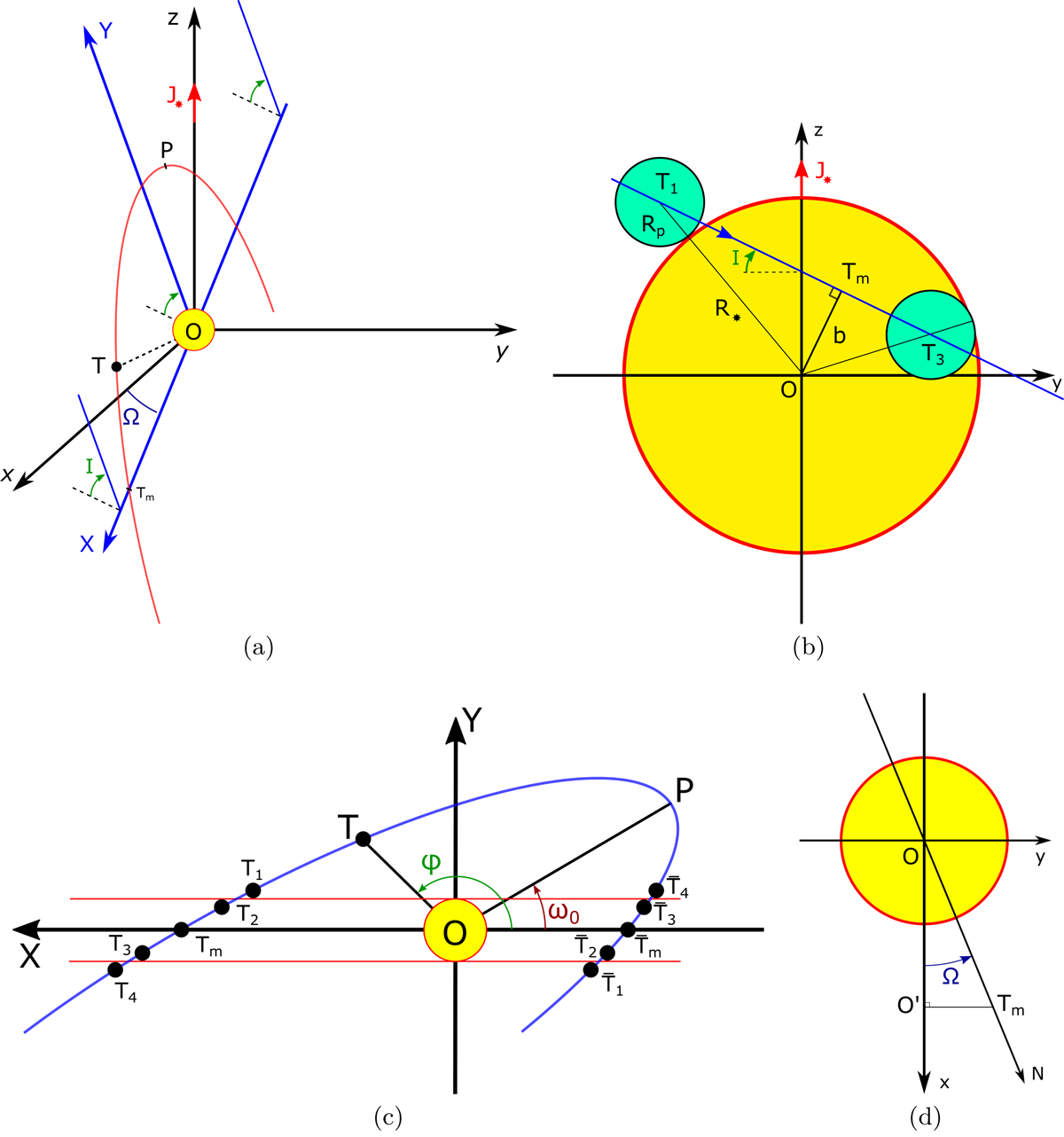Fig. 1.

Geometry of the planetary transit: (a) Motion of the planet with respect to the observer, located at infinity in the direction of x of the frame {x, y, z}. The centre of the star is denoted O, P is the periastron at reference time tP, and J⋆ is the angular momentum of the star projected on the plane of the sky {y, z}. (b) The transit as seen by the observer and the definition of the points {Ti}; here are only shown T1 and T3. (c) The trajectory of the planet and the points {Ti} (transit) and ![]() (eclipse) as seen in the orbital plane {X, Y}. Up to an angle Ω, the observer is in the direction of X. (d) View of the transit from above. The direction (ON) is the line of “nodes”, corresponding to (OX) in (a).
(eclipse) as seen in the orbital plane {X, Y}. Up to an angle Ω, the observer is in the direction of X. (d) View of the transit from above. The direction (ON) is the line of “nodes”, corresponding to (OX) in (a).
Current usage metrics show cumulative count of Article Views (full-text article views including HTML views, PDF and ePub downloads, according to the available data) and Abstracts Views on Vision4Press platform.
Data correspond to usage on the plateform after 2015. The current usage metrics is available 48-96 hours after online publication and is updated daily on week days.
Initial download of the metrics may take a while.


